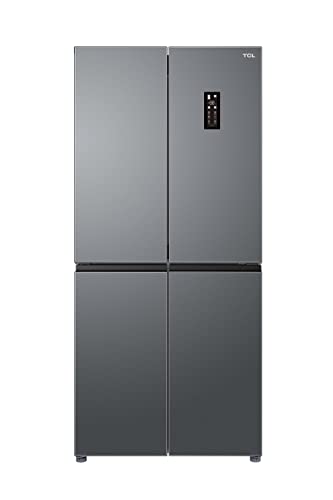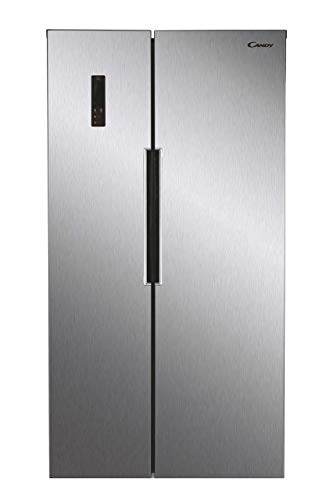Why Choose a Fridge Freezer Frost Free?
You'll save time and effort if you choose a freezer that is frost-free. They also retain more storage space than models that do not include this feature.
The areas around the kitchen from water drips during defrosting by putting towels or old sheets next to the appliance.
There is no need to defrost.
Fridge Freezers with Total No Frost technology constantly circulate cool air throughout both compartments, stopping the formation of ice on the walls of the freezer. This is a great option for people who like to store a variety of items in the freezer, but don't like the idea of having to defrost it each year. If you have an accumulation of ice inside your freezer, it will usually go through a defrost cycle automatically.
The most obvious benefit of having a frost-free freezer is not having to defrost it, which could be a laborious and time-consuming process that can take up to 24 hours every time. A frost-free freezer allows you to store more food because it doesn't require space.

Another great advantage of a frost-free freezer is that it will have greater energy efficiency than refrigerators that use conventional defrost systems that means you'll reduce your electricity bills. Defrosting a refrigerator freezer is generally necessary when it has an excessive amount ice. This is because frozen ice hampers the refrigeration system's ability to effectively cool the freezer.

It's usually caused by the thermostat being defective and does not regulate the temperature correctly. The freezer may have been opened and shut often, allowing humidity to get into the freezer. To avoid this, wait until the food is cooled before placing it in the freezer or fridge. Also, ensure all containers are tightly closed.
If you don't overfill your fridge freezer, you can reduce the likelihood of it defrosting. It is recommended to store food in separate containers and use smaller quantities at a time, instead of filling the freezer to capacity. This will also ensure that the freezer fan isn't obstructed and can circulate air properly.
Check that the seal on the door isn't damaged. This is what keeps room air from entering the fridge and freezer. If the seal is damaged, warm air can enter the fridge, causing frost to accumulate on the evaporator. To prevent this from happening, clean the evaporator coil using a special spray, which will help to remove any frost that has built up.
No more the accumulation of ice
You will need to defrost the freezer less frequently in the event that there isn't any ice accumulation. If you notice frost on the rear of your freezer, it could be an indication that your
best fridge-freezer is not defrosting properly. If a refrigerator or freezer is properly defrosted it will shut off its cooling system every 6 hours for 20 minutes so that the heaters can prevent frost from forming behind the back wall and also on the evaporator. This ensures that air is able to flow freely through both freezer and refrigerator and prevents food items from forming a hard consistency.
Check that the seal on the freezer door isn't damaged or blocked. Also, ensure that you are not overloading your freezer or storing things in plastic bags or other containers that stop cold air from circulating around them. Be sure that your freezer isn't too close to a radiator or heater.
If you need to remove an accumulation of ice from your freezer, avoid using a knife or any other sharp object as this can damage the appliance. Instead, disconnect the freezer and let the ice melt. Clean the inside, and plug it into the freezer.
You can also put an old towel in front of the
fridge freezer next day delivery and let it melt. Then, wipe down the freezer with a clean, dry cloth. Check that the temperature is in the right range prior to restocking.
A fridge freezer that has frost-free functionality will save you a lot of time and effort, so make sure to consider this option when you are choosing your next kitchen appliance. If you'd like further guidance or assistance in choosing your new freezer, get in touch with an Abt expert. They'll be able to find the perfect appliance that will fit your needs and budget. They'll also provide support with your installation as well as any after-sales issues you may face.
No more smells
Unlike traditional
fridge freezer uk freezers where bad smells can get into the freezer compartment and cause a mess to the food, frost free models are not a problem with this. The compressor circulates air to cool them. This air is cooled down to 0degC, which means it does not emit odours. It is still essential to store foods in airtight containers, or wrap them in polyethylene bags, plastic coated frozen paper, heavy duty aluminum foil, or similar to reduce the amount of moisture that is in the fridge.
Despite the name of frost free, these fridge freezers still need defrosting from time to time. This is because they're not as efficient as traditional freezers. The evaporator coils inside the freezer are at the back and a defrost heating element is used to melt the frost that forms on the coils. If this isn't functioning, the frost may accumulate on the evaporator, leading to cooling issues.
If you don't use an automated defrost system, you'll need to manually defrost the freezer every now and then. The good thing is that it only takes a couple of minutes and will not affect the taste of your food. If you have a Frost Free model, with Total No Frost Technology, it won't need to defrost as it circulates cool air continuously throughout both compartments, preventing any buildup of ice on cabinet walls.
The odors in fridge freezers (
https://Fridgefreezer02039.xzblogs.com) are caused by volatile chemical compounds, which react with water, while others do not. If the smells originate from bacteria, then the compounds will migrate and contaminate food in the freezer. If the odours in the fridge are natural they'll remain there until they are ejected through the vents or eliminated by the defrost cycles.
If smells begin to permeate the freezer, it's likely there's a problem with the seal or an issue with the cooling process. Moisture can get into the fridge freezer when the freezer's door is opened which allows warm air in, or if food packages are packed so tightly that they restrict airflow through the evaporator.
Easy to clean
Fridge freezers that do not require manual defrosting are easier to clean. You can clean the freezer using baking soda and water solution when it is empty. Mix 1 tablespoon of baking powder and a quart of warm water. Dip an absorbent towel in the solution and then wipe down all interior surfaces. If the seal around the doors gets dirty you can clean it. The cooling coils on the back of the fridge are easier to clean since they do not have ice. You should also not block the vents on the freezer, because they're designed to allow air to circulate. Crumbs, paper and twist ties can be sucked in here which can cause the fan to stop.
It is possible to place activated charcoal in a container in your freezer to reduce or eliminate the smell. This type of charcoal can be found in grocery stores in the cleaning section.
Before you put your frozen food back into the freezer, it's an ideal idea to line the floor of your freezer with old cloths or towels so that the melted ice doesn't soak up too much water. Also, make sure you wash your freezer drawers, bins and ice trays prior to placing them back in the freezer.
To avoid the necessity of defrosting, invest in a refrigerator/freezer with Total No Frost Technology. This technology keeps the freezer compartment at a constant temperature of 0 degrees Fahrenheit and constantly circulates cool air, which stops ice from building up on the walls of the cabinet. It's a solution that can save you lots of time and money in the long term and will also keep your food fresher longer.
Defrosting a traditional refrigerator is still necessary at least once a year or when the ice layer has reached a thickness of 1/4 inch. Always check that the gasket on the door is sealing correctly. Close the freezer on white paper. If it is easily removed the gasket must be replaced.
 Another great advantage of a frost-free freezer is that it will have greater energy efficiency than refrigerators that use conventional defrost systems that means you'll reduce your electricity bills. Defrosting a refrigerator freezer is generally necessary when it has an excessive amount ice. This is because frozen ice hampers the refrigeration system's ability to effectively cool the freezer.
Another great advantage of a frost-free freezer is that it will have greater energy efficiency than refrigerators that use conventional defrost systems that means you'll reduce your electricity bills. Defrosting a refrigerator freezer is generally necessary when it has an excessive amount ice. This is because frozen ice hampers the refrigeration system's ability to effectively cool the freezer. It's usually caused by the thermostat being defective and does not regulate the temperature correctly. The freezer may have been opened and shut often, allowing humidity to get into the freezer. To avoid this, wait until the food is cooled before placing it in the freezer or fridge. Also, ensure all containers are tightly closed.
It's usually caused by the thermostat being defective and does not regulate the temperature correctly. The freezer may have been opened and shut often, allowing humidity to get into the freezer. To avoid this, wait until the food is cooled before placing it in the freezer or fridge. Also, ensure all containers are tightly closed.